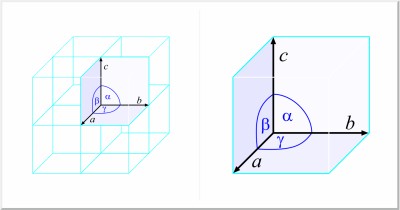Lr
Lawrencium
LAWRENCIUM
TRANSITION ELEMENT: ACTINIDE
| Atomic number: | 103 |
| Group numbers: | 3 |
| Period: | 7 |
| Electronic configuration: | [Rn] 5f14 6d1 7s2 |
| Formal oxidation number: | +3 |
| Electronegativities: | - |
| Atomic radius / pm: | - |
| Relative atomic mass: | - |
Lawrencium was discovered by Albert Ghiorso, Torbjorn Sikkeland, Almon E. Larsh, and Robert M. Latimer (US) in 1961. Named in honour of Ernest O. Lawrence, inventor of the cyclotron. It is a synthetic radioactive metal. Lawrencium was produced by bombarding a mixture of three isotopes of californium with boron-10 and boron-11 ions. Eight isotopes of lawrencium have been synthesized to date, with the longest-lived being lawrencium-256, which has a half-life of about 30 seconds.
| Density / g dm-3: | - | |
| Molar volume / cm3mol-1: | - | |
| Electrical resistivity / µΩcm: | - | (20 °C) |
| Thermal conductivity / W m-1K-1: | - |
| Melting point / °C: | - |
| Boiling point / °C: | - |
| Heat of fusion / kJ mol-1: | - |
| Heat of vaporization / kJ mol-1: | - |
| Heat of atomization / kJ mol-1: | 308 |
| First ionization energy / kJ mol-1: | - |
| Second ionization energy / kJ mol-1: | - |
| Third ionization energy / kJ mol-1: | - |
| in the atmosphere / ppm: | - |
| in the Earth's crust / ppm: | - |
| in the oceans / ppm: | - |
| Crystal structure: | unknown structure |
| Unit-cell dimensions / pm: | - |
| Space group: | - |

| Isotope | Relative atomic mass | Mass percent (%) |
|---|---|---|
| 261Lr | 261.107(2) | * |
| 262Lr | 262.110(2) | * |
| Balanced half-reaction | Eo / V | |
|---|---|---|
| 102 Nobelium | ← | 103 Lawrencium | → | 104 Rutherfordium |
Citing this page:
Generalic, Eni. "Lawrencium." EniG. Periodic Table of the Elements. KTF-Split, 18 Jan. 2024. Web. {Date of access}. <https://www.periodni.com/lr.html>.
Articles and tables
- Periodic table
- Online calculators
- Scientific calculator for chemists
- Gas laws calculator
- Molar mass calculator
- Angle converter
- Roman numerals converter
- Number systems converter
- Preparation of solutions
- Labeling of chemical containers
- Oxidation numbers calculator
- ARS method
- Oxidation number change method
- Ion-electron method
- Gauss elimination method
- Memory game
- Find the pairs
- Articles and tables
- Chemistry
- List of abbreviations and acronyms
- Crystal systems and Bravais lattices
- GHS - Hazard pictograms
- NFPA 704 Hazard Diamond
- Fundamental physical constants
- Solubility product constants
- SI - International System of Units
- Composition of mixtures and solutions
- Stoichiometric calculations
- Chlorinity and salinity of seawater
- Rare earth elements (REE)
- Ecology
- Web design
- Chemistry dictionary
- Chemistry
- Downloads
- ≡ Menu
Copyright © 1998-2024 by Eni Generalic. All rights reserved. | Bibliography | Disclaimer
